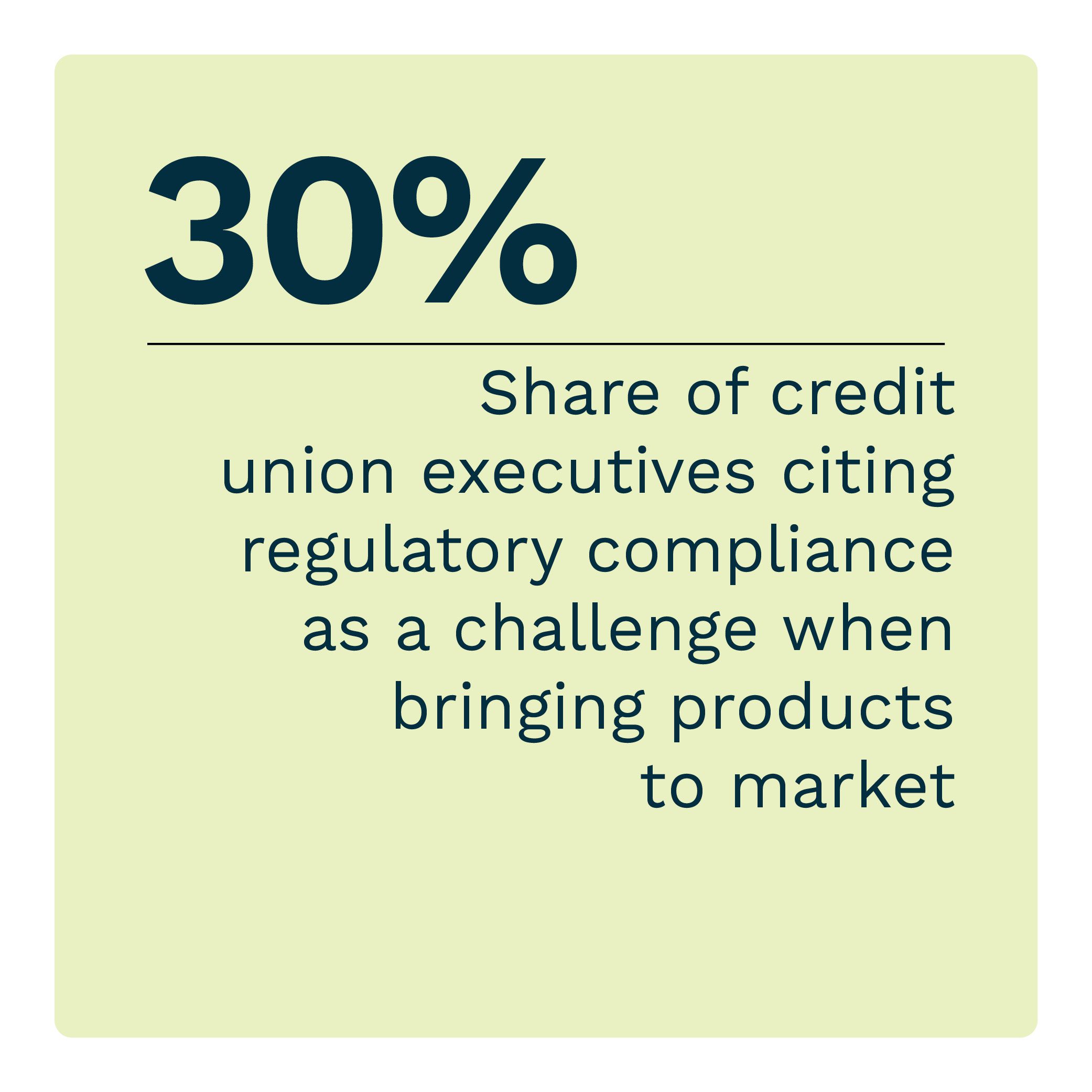Credit Unions Keep Open Dialogue With Lawmakers in Wake of Banking Turmoil

The suddenness of the Silicon Valley Bank collapse shocked the venture capital and technology communities. When the bank’s massive investment losses caused a significant swath of depositors to withdraw their money, regulators quickly shut down the bank to protect its customers. The bank’s fall now has regulators and lawmakers on the state and federal level scrambling to investigate and address the bank’s regulatory compliance and risk management issues that led to this event, and financial institutions (FIs) are bracing for change.![]()
Credit unions (CUs) differentiate themselves from other FIs by being member-focused and transparent. Still, 41% admit to being weighed down by regulatory and compliance as they look to move digital initiatives forward. The National Credit Union Administration (NCUA) recently cited several CU violations in fair lending, for example, due to weaknesses in compliance management systems. As CUs embark on their digital transformations, they have an opportunity to match a next-generation core banking platform with a customizable, scalable compliance management system.
The “Credit Union Tracker®” examines how regulators are moving to protect consumers in the wake of the Silicon Valley Bank collapse and how credit unions can employ technology and strengthen relationships to prepare for regulatory changes.
Around the Credit Union Space
Congress established the Consumer Financial Protection Bureau (CFPB) in 2010 to address the abuses that contributed to the Great Recession.![]() With the Supreme Court set to investigate and potentially dismantle the CFPB, credit union leaders, though longtime critics of the bureau, are nevertheless concerned about the ramifications.
With the Supreme Court set to investigate and potentially dismantle the CFPB, credit union leaders, though longtime critics of the bureau, are nevertheless concerned about the ramifications.
Data brokers have taken on an outsized role in consumers’ daily lives but have done so mostly out of the public eye. As more companies track and collect consumer data, the introduction of the Data Privacy Act of 2023 aims to provide consumers more control of their personal information.
For more on these and other stories, visit the Tracker’s News and Trends section.
An Insider on Staying Ahead of Regulation with Proactive Measures
As credit unions brace for likely regulatory changes on the heels of the recent Silicon Valley Bank collapse, they must proactively contribute to the conversation.
To get the Insider POV, we spoke with Todd Lane, president and CEO of California Coast Credit Union, to learn how CUs can establish good communication with policymakers and regulators to better position themselves regarding regulatory compliance.
 Protecting Members Is at the Heart of Compliance
Protecting Members Is at the Heart of Compliance
Several federal agencies handle banking and credit union regulation, including the National Credit Union Administration (NCUA), the Federal Reserve, the CFPB and the Federal Deposit Insurance Corporation (FDIC), as well as a host of state agencies. NCUA priorities for 2023 include fraud prevention and detection, consumer financial protection and information security, changes which CU compliance management systems must adapt to.
To learn more about how CUs are preparing for regulatory shifts surrounding junk fees and open banking, read the Tracker’s PYMNTS Intelligence.
About the Tracker
The “Credit Union Tracker®,” a collaboration with PSCU, examines how regulators are moving to protect consumers after the Silicon Valley Bank collapse and how credit unions can employ technology and strengthen relationships to prepare for regulatory changes

